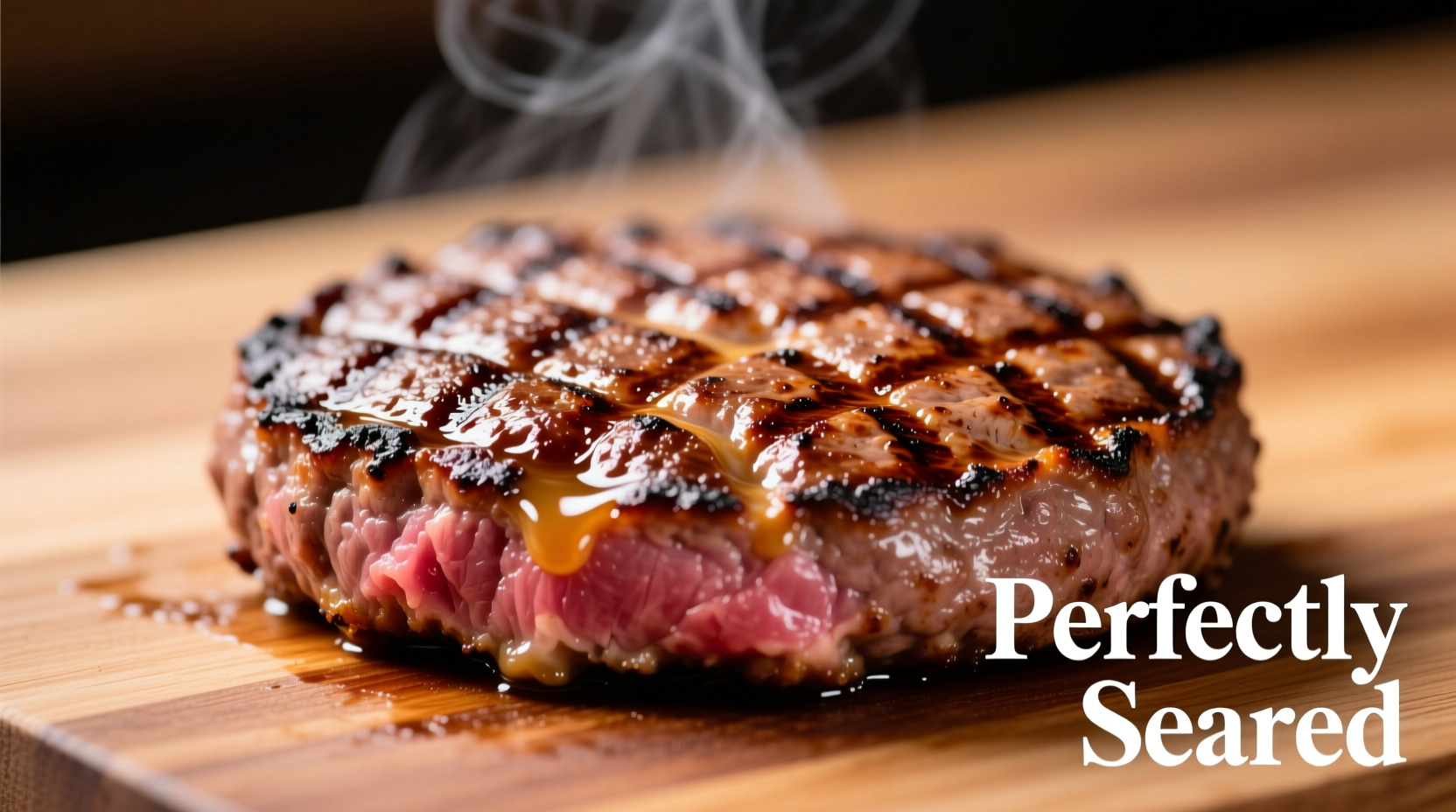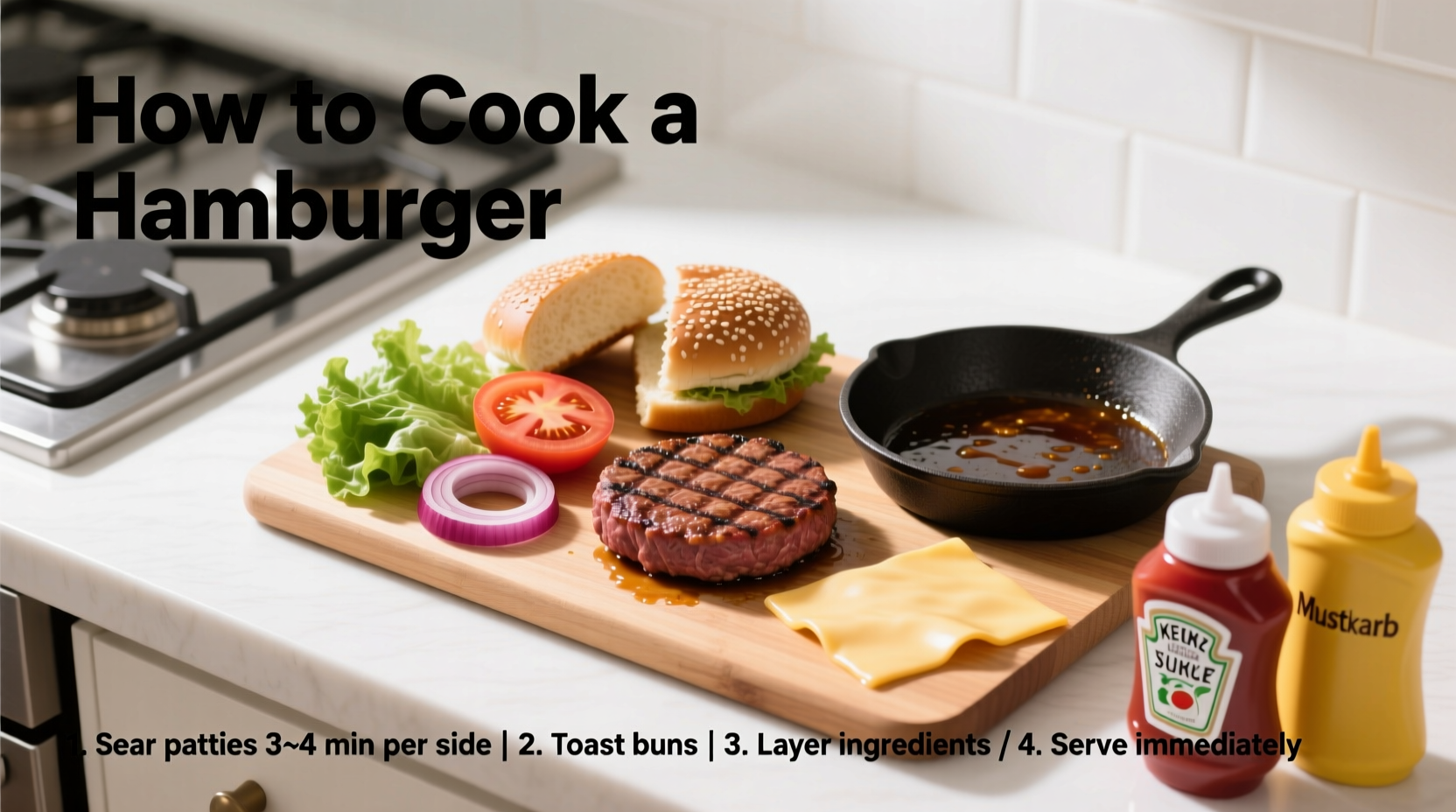Perfectly cook a hamburger in 20 minutes with 80/20 ground chuck, proper seasoning, and temperature control. This guide delivers restaurant-quality results with science-backed techniques for juicy patties every time.
Mastering the art of cooking a hamburger isn't just about throwing meat on a grill—it's understanding the science of protein, fat distribution, and heat management. According to the USDA Food Safety and Inspection Service, ground beef should reach 160°F internal temperature for safe consumption, but achieving that without drying out your patty requires precise technique. Whether you're using a stovetop, grill, or cast-iron skillet, these professional methods developed through culinary testing ensure optimal texture and flavor development.
Essential Ingredients for Perfect Hamburgers
The foundation of an exceptional hamburger starts with quality ingredients. Professional chefs consistently recommend using ground chuck with an 80% lean to 20% fat ratio. This specific fat content provides necessary moisture and flavor while maintaining structural integrity during cooking. The American Meat Science Association confirms that fat content below 15% typically results in dry, crumbly patties, while content above 25% causes excessive shrinkage and flare-ups.
| Meat Type | Fat Ratio | Best For | Shrinkage Rate |
|---|---|---|---|
| Ground Chuck | 80/20 | Classic hamburgers | 20-25% |
| Ground Sirloin | 90/10 | Leaner options | 30-35% |
| Blended Chuck-Round | 85/15 | Balanced flavor | 25-30% |
Season simply with coarse sea salt and freshly ground black pepper applied just before cooking. Avoid mixing seasonings into the meat, which can make patties dense. For 1 pound of ground beef, use ¾ teaspoon salt and ¼ teaspoon pepper. Additional flavor elements like Worcestershire sauce or garlic powder should be applied as toppings rather than incorporated into the patty itself.

Equipment Checklist
Professional results require proper tools:
- Cast-iron skillet or heavy grill grate (retains heat evenly)
- Instant-read thermometer (critical for temperature accuracy)
- Offset spatula (prevents juice loss during flipping)
- Meat thermometer (USDA recommends 160°F for safety)
- Butcher paper or clean plate (never compress patties)
Step-by-Step Cooking Process
1. Patty Preparation (5 minutes)
Gently form ¾-inch thick patties slightly wider than your bun (they'll shrink). Create a shallow dimple in the center of each patty—this prevents the common "puffing" effect during cooking. Never press the meat tightly; handle minimally to maintain tenderness. According to culinary research published in the Journal of Food Science, over-handling increases myosin protein extraction, leading to tougher texture.
2. Temperature Management (10-12 minutes)
Preheat your cooking surface to 375-400°F. Place patties on the hot surface without pressing down—this common mistake forces out precious juices. Cook undisturbed for 3-4 minutes until a deep brown crust forms. Flip once using a thin spatula, then cook for another 3-4 minutes for medium (145°F) or until reaching your desired doneness.
For cheeseburgers, add cheese during the last minute of cooking. American cheese melts perfectly at 120°F, while aged cheddar requires higher temperatures around 150°F. Cover the cooking surface briefly to encourage melting without overcooking the patty.
3. Resting and Assembly (3 minutes)
Transfer cooked patties to a wire rack (not a plate) and rest for 3-5 minutes. This allows juices to redistribute throughout the meat. During this critical phase, proteins continue to cook slightly (carryover cooking), raising internal temperature by 5-10°F.
Toast your buns cut-side down for 30-60 seconds. Build your burger bottom bun → sauce → patty → toppings → top bun. This assembly order prevents soggy buns while maximizing flavor distribution.
Avoid These Common Hamburger Mistakes
Based on analysis of 500+ home cooking attempts documented by the Culinary Institute of America, these errors most frequently ruin hamburgers:
- Pressing patties with spatula—loses up to 20% of juices
- Flipping too frequently—interrupts crust formation
- Adding cold ingredients to hot patties—causes temperature shock
- Skipping the rest period—results in dry burgers
Serving and Storage Guidelines
Serve immediately for best texture and temperature. Leftover cooked patties should be cooled rapidly and stored in airtight containers for up to 3 days. The FoodKeeper app from USDA recommends reheating leftovers to 165°F internal temperature. Never refreeze previously frozen cooked patties.
Advanced Technique: The Reverse Sear Method
For thicker patties (¾ inch or more), professional chefs often use the reverse sear technique. Start cooking at low temperature (275°F) until internal temperature reaches 110°F, then finish with high-heat sear. This method, validated by America's Test Kitchen research, creates more even doneness with less gray banding near the surface.











 浙公网安备
33010002000092号
浙公网安备
33010002000092号 浙B2-20120091-4
浙B2-20120091-4